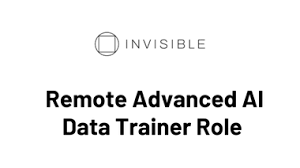Posting job openings on multiple job boards is essential to reach a wider pool of candidates, but the process can be time-consuming and overwhelming if not done efficiently. Whether you’re an HR professional or a small business owner new to the hiring process, the key to success lies in optimizing how you manage job postings across various platforms.
This guide will walk you through everything you need to know about posting to multiple job boards efficiently. From selecting the right tools and platforms to crafting compelling job descriptions and tracking your results, we’ll break down each step to ensure your hiring process is as smooth and effective as possible. With practical advice and actionable tips, you’ll be well-equipped to streamline your job posting efforts and attract top talent without unnecessary stress or hassle.
Why Post to Multiple Job Boards?
Posting to multiple job boards is crucial because it increases the visibility of your job openings. Different job seekers use different platforms, so relying on just one or two job boards can limit your reach. By posting to multiple job boards, you can ensure that your job listing reaches a diverse audience, increasing the chances of finding the ideal candidate.
Additionally, different job boards cater to different industries and roles. For instance, some platforms may be more popular among IT professionals, while others might be frequented by marketing experts. Posting your job on multiple boards allows you to target specific groups of candidates and ensures that your job listing is seen by those with the relevant skills and experience.
Selecting the Right Job Boards
Choosing the right job boards is the first step toward efficient job posting. With countless platforms available, it’s essential to identify the ones that best match your industry, the type of role you’re hiring for, and your budget.
- Industry-Specific Job Boards: These platforms cater to particular sectors or professions. For example, TechCareers is ideal for IT roles, while MediaBistro is excellent for media and creative positions. Using industry-specific job boards can help you reach candidates with the right expertise.
- General Job Boards: Platforms like Indeed, LinkedIn, and Glassdoor have a broad audience and are suitable for almost any type of job posting. They offer great visibility but can sometimes lead to an overwhelming number of applications, not all of which may be relevant.
- Niche Job Boards: These are specialized platforms that target specific groups of candidates, such as remote workers, freelancers, or recent graduates. If your job has unique requirements or you’re looking for a specific type of candidate, niche job boards can be very effective.
- Local Job Boards: If your job is location-specific, local job boards can help you find candidates in a particular geographic area. Websites like Craigslist and regional job sites can be beneficial for roles that require local talent.
Crafting the Perfect Job Description
A well-written job description is the foundation of successful job posting. It’s not just about listing the duties and qualifications; it’s about presenting the role in a way that attracts the right candidates.
- Clear Job Title: Use a job title that accurately reflects the role. Avoid jargon or creative titles that might confuse potential applicants. The job title should be straightforward and commonly used in your industry.
- Concise Summary: Start with a brief overview of the role, highlighting what makes it unique and why a candidate would want to work for your company. This section should grab attention and entice the reader to learn more.
- Detailed Responsibilities: Clearly outline the key responsibilities of the role. Use bullet points to make this section easy to read, but ensure each point is descriptive enough to convey the full scope of the job.
- Required Qualifications: List the necessary skills, experience, and qualifications. Be specific, but avoid creating an overly long list of requirements that might deter good candidates from applying.
- Company Information: Include a brief description of your company, its culture, and its values. Candidates want to know who they might be working for, so make this section inviting and informative.
- Application Process: Provide clear instructions on how to apply. Mention any deadlines, required documents, and the expected timeline for the hiring process.
Utilizing Job Posting Tools
Manual posting to multiple job boards can be tedious and prone to errors. Fortunately, there are tools and software designed to streamline this process, saving you time and effort.
- Applicant Tracking Systems (ATS): An ATS can help you manage the entire hiring process, from posting jobs to tracking applicants. These systems often integrate with multiple job boards, allowing you to post to several platforms simultaneously.
- Job Distribution Services: These services specialize in posting your job to multiple job boards with just one submission. Tools like Broadbean, ZipRecruiter, and Multiposting offer extensive distribution networks, making it easy to reach a wide audience quickly.
- Social Media Integration: Many ATS and job distribution tools allow you to post job openings on social media platforms like LinkedIn, Facebook, and Twitter. This can significantly expand your reach, especially among passive job seekers who might not be actively looking on traditional job boards.
- Automated Posting: Some tools offer automated posting features, where you can set up job postings in advance and schedule them to go live on multiple platforms at specific times. This ensures that your job openings are always fresh and visible without constant manual intervention.
Best Practices for Job Posting
Efficiency in posting to multiple job boards isn’t just about the tools you use; it’s also about following best practices that optimize your efforts.
- Consistency Across Platforms: Ensure that your job descriptions are consistent across all platforms. Inconsistent information can confuse applicants and create unnecessary complications in the hiring process.
- Optimize for Keywords: Just like SEO for websites, job postings should be optimized with relevant keywords. This increases the chances of your job appearing in search results when candidates look for specific roles.
- Monitor and Adjust: After posting, monitor the performance of your job listings. Pay attention to the number of views, applications, and the quality of candidates. If a particular job board isn’t delivering the desired results, consider adjusting your approach or focusing on more effective platforms.
- Engage with Candidates: Respond to applications promptly and engage with candidates throughout the hiring process. This not only improves the candidate experience but also helps you move quickly in securing top talent before they’re snapped up by competitors.
- Use Analytics: Many job posting tools and ATS provide analytics on the performance of your job listings. Use this data to refine your strategy, focusing on the platforms and practices that yield the best results.
Tracking and Measuring Success
Once your job postings are live, it’s important to track and measure their success. This helps you understand which platforms and strategies are most effective, allowing you to continuously improve your hiring process.
- Application Tracking: Use your ATS or job posting tool to track the number of applications received from each platform. This will help you identify the most effective job boards.
- Quality of Applicants: It’s not just about quantity; quality matters too. Evaluate the relevance and experience of the candidates coming from each job board. This can help you focus your efforts on the platforms that attract the best candidates.
- Time-to-Fill: Measure the time it takes to fill a position from the moment the job is posted. Faster time-to-fill often indicates a more efficient job posting strategy.
- Cost-Per-Hire: Calculate the cost associated with each hire, including job board fees, the time spent managing postings, and any other related expenses. This will help you assess the return on investment for each platform.
- Feedback from Candidates: Collect feedback from candidates about their experience during the application process. This can provide valuable insights into how your job postings are perceived and what improvements can be made.
Conclusion
Posting to multiple job boards efficiently is a critical component of a successful hiring strategy. By selecting the right platforms, crafting compelling job descriptions, utilizing advanced tools, and following best practices, you can streamline the process and attract top talent with ease. Remember to track your results and continuously refine your approach, ensuring that your efforts yield the best possible outcomes.
Hiring the right candidate doesn’t have to be a stressful or time-consuming process. With the right strategies and tools in place, you can efficiently manage your job postings and focus on what matters—finding the perfect fit for your team.




